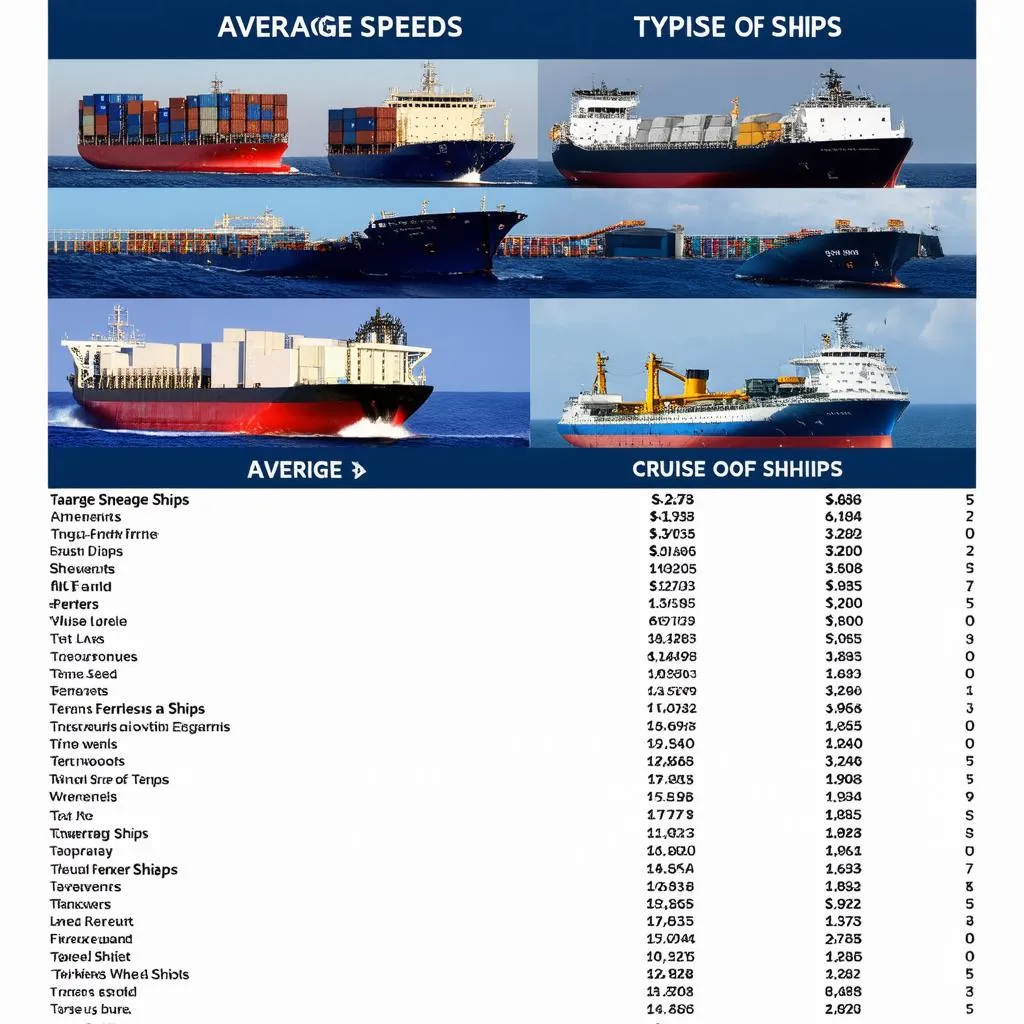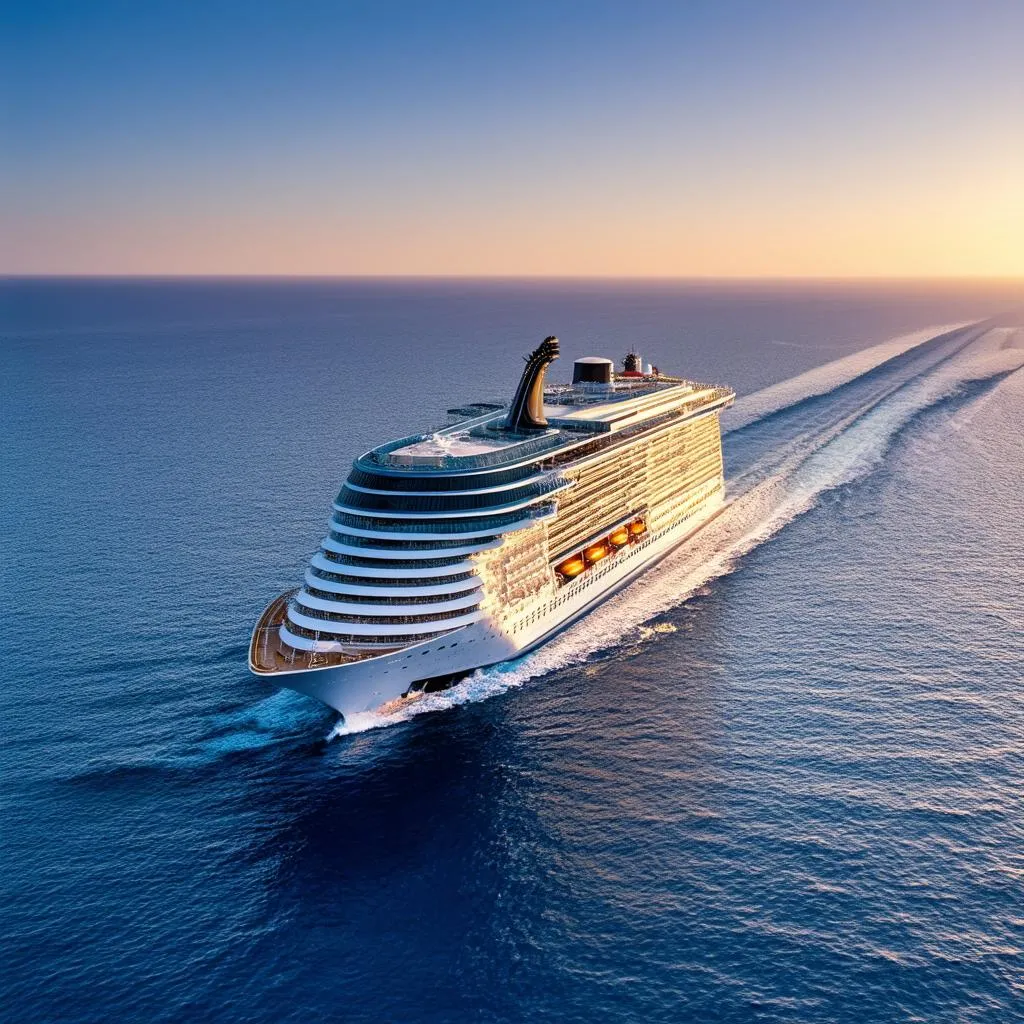Have you ever stood on the shore, watching a massive cargo ship disappear over the horizon and wondered, “Just how fast IS that thing going?”. It’s a question that sparks curiosity in many of us. The speed of ships, those behemoths of the sea, isn’t a simple one-size-fits-all answer. It’s a fascinating world influenced by various factors, from the vessel’s design and purpose to the ever-changing moods of the ocean. Let’s embark on a journey to explore the intriguing world of maritime speeds.
Factors Affecting a Ship’s Speed
Several factors play a crucial role in determining how fast a ship can travel. Understanding these helps us appreciate the complexities involved:
1. Ship Type and Design: Built for Speed or Strength?
- Cargo Ships: These workhorses of the sea prioritize carrying massive amounts of goods over speed. Their average speed hovers around 10-20 knots (11-23 mph).
- Cruise Ships: Designed for passenger comfort and luxury, they cruise at a leisurely pace, typically around 20-25 knots (23-29 mph), allowing travelers to soak in the journey.
- Container Ships: Tasked with transporting goods quickly, these vessels can reach speeds of 20-25 knots (23-29 mph).
- Speed Boats: Built for speed and agility, these nimble vessels can easily hit 30 knots (35 mph) or more.
2. Engine Power: The Heart of the Matter
Just like cars, a ship’s engine size and type directly impact its speed. Larger, more powerful engines translate to higher potential speeds.
3. Hull Design: Slicing Through the Waves
A ship’s hull, the underwater part of the ship, significantly impacts its hydrodynamics. A streamlined hull reduces water resistance, allowing for greater speed.
4. Weather Conditions: The Unpredictable Factor
The sea can be a fickle mistress. Strong winds, high waves, and storms can significantly impede a ship’s progress, forcing it to reduce speed for safety.
5. Water Depth and Currents: Navigating the Unseen
Shallow waters and strong currents can affect a ship’s speed, demanding careful navigation and adjustments.
Average Speeds of Different Ship Types
To give you a clearer picture, let’s delve into the average speeds of various ship types:
| Ship Type | Average Speed (knots) | Average Speed (mph) |
|---|---|---|
| Cargo Ship | 10-20 | 11-23 |
| Cruise Ship | 20-25 | 23-29 |
| Container Ship | 20-25 | 23-29 |
| Tanker | 10-15 | 11-17 |
| Bulk Carrier | 12-15 | 14-17 |
| Ferry | 15-25 | 17-29 |
Fascinating Facts About Ship Speeds
- Did you know that the world’s fastest ship, the Spirit of Australia, is a hydroplane that reached a staggering 317 mph? That’s faster than most cars!
- In ancient times, sailors used “knots” to measure a ship’s speed. They would toss a rope with knots tied at regular intervals into the water and count how many knots passed through their hands in a specific time.
- “Dr. Anne Marie,” a renowned maritime historian, states in her book, “Voyages Through Time,” “The development of the steam engine revolutionized ship travel, allowing for faster and more reliable journeys across the globe.”
 Ship Speed Comparison Chart
Ship Speed Comparison Chart
Planning Your Seafaring Adventure?
If you’re considering a journey on the high seas, be it a leisurely cruise to the Bahamas or a transatlantic voyage, remember that factors beyond speed influence the experience. Consider the ship’s amenities, the itinerary, and your personal preferences. At “travelcar.edu.vn,” we offer a wealth of resources to help you plan your perfect seafaring adventure, ensuring a journey filled with wonder and excitement.
 Cruise Ship on Calm Seas at Sunset
Cruise Ship on Calm Seas at Sunset
FAQs About Ship Speeds
1. How long does it take for a ship to cross the Atlantic Ocean?
The time it takes to cross the Atlantic by ship varies depending on the route, the ship’s speed, and weather conditions. On average, it takes about 6-8 days for a cruise ship and 10-14 days for a cargo ship.
2. What is the fastest a cargo ship can travel?
While most cargo ships cruise at 10-20 knots (11-23 mph), some modern container ships can reach speeds of up to 25 knots (29 mph).
3. Why are ships slower than airplanes?
Ships face significantly more resistance from water than airplanes do from air. Additionally, ships are much larger and heavier than airplanes, requiring more energy to propel them.
Embark on a Journey of Discovery with travelcar.edu.vn
From the sleek lines of a racing yacht to the impressive bulk of a cargo ship, the world of maritime travel is captivating. We invite you to explore more fascinating insights and travel tips on our website, “TRAVELCAR.edu.vn.” Discover the world, one voyage at a time!
Ready to Chart Your Course?
Share your thoughts, questions, and travel dreams in the comments below! We love hearing from fellow travel enthusiasts.